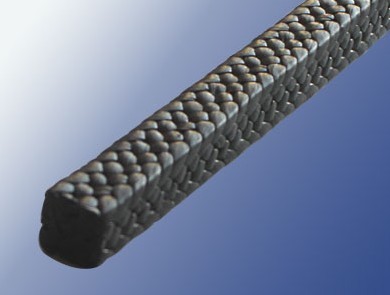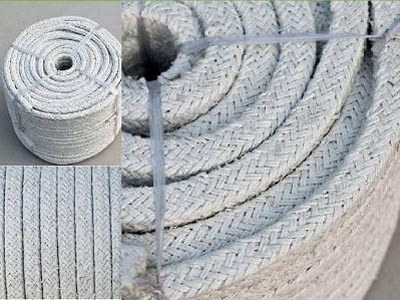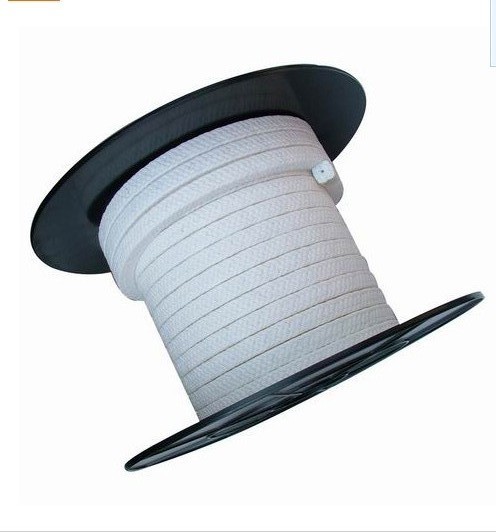In the world of industrial sealing solutions, PTFE packings stand out for their exceptional performance and reliability. These packings are engineered from polytetrafluoroethylene, a high-performance polymer known for its unique combination of properties. They are specifically designed to create effective seals in a wide range of demanding applications, including pumps, valves, and agitators, where they prevent leakage of fluids and gases. The inherent characteristics of PTFE make these packings suitable for handling aggressive chemicals, high-purity processes, and extreme temperatures where other materials would fail. Their low friction coefficient also contributes to reduced wear on equipment shafts and stems, leading to longer service life and lower maintenance costs. As industries increasingly demand more efficient and durable sealing solutions, PTFE packings have become a go-to choice for engineers and maintenance professionals worldwide.
To ensure optimal performance and correct selection, it is crucial to understand the detailed specifications of PTFE packings. The following list outlines the primary parameters that define their capabilities and suitability for various applications.
For a quick comparison and detailed engineering analysis, the following table presents the core technical data for standard PTFE packing styles.
| Property | Test Method | Pure PTFE Braided | PTFE with Carbon Fill | PTFE with Glass Fill |
|---|---|---|---|---|
| Tensile Strength | ASTM D2256 | 4,500 psi (31 MPa) | 5,000 psi (34 MPa) | 6,000 psi (41 MPa) |
| Elongation at Break | ASTM D2256 | 25% | 20% | 15% |
| Chemical Resistance | N/A | Excellent | Excellent | Excellent (Except HF & molten alkalis) |
| Max PV Value | N/A | 35,000 psi-fpm | 45,000 psi-fpm | 50,000 psi-fpm |
| Thermal Expansion Coefficient | ASTM D696 | 5.5 x 10-5 in/in/°F | 5.0 x 10-5 in/in/°F | 4.8 x 10-5 in/in/°F |
| Dielectric Strength | ASTM D149 | 500 V/mil | 450 V/mil | 400 V/mil |
What are the primary advantages of using PTFE packings over traditional materials like asbestos or graphite?
PTFE packings offer several key advantages, including superior chemical resistance to a vast range of aggressive media, a very low coefficient of friction that reduces shaft wear and power requirements, and a wide operational temperature range. They are also non-contaminating, making them ideal for food, pharmaceutical, and semiconductor applications. Unlike asbestos, they are safe to handle and pose no health risks, and compared to graphite, they do not require extensive lubrication and are less prone to galvanic corrosion.
In which specific industries and applications are PTFE packings most commonly used?
PTFE packings are ubiquitous across many industries. They are heavily used in chemical processing for sealing pumps and valves handling acids, caustics, and solvents. The food and beverage industry utilizes them for their purity and compliance with FDA standards. In pharmaceuticals, they seal reactors and transfer lines for high-purity ingredients. Other key sectors include power generation, water and wastewater treatment, pulp and paper manufacturing, and marine applications for stern tube seals and pump shafts.
How do I select the correct type of PTFE packing for my application?
Selection depends on multiple factors. First, identify the fluid media and its concentration, temperature, and pressure. For highly abrasive services, a PTFE packing with carbon or graphite filler is recommended for improved wear resistance. For applications requiring high mechanical strength, a glass-filled PTFE may be best. Consider the equipment type (e.g., centrifugal pump, mixer) and shaft speed. Consulting the manufacturer's selection guide and providing them with your complete operating conditions is the most reliable method for choosing the optimal packing.
What is the proper procedure for installing PTFE packings to ensure a long service life?
Proper installation is critical. Begin by cleaning the stuffing box and shaft thoroughly, removing any old packing residue. Check the shaft or stem for wear or scoring. Cut the new PTFE packing rings to size using a sharp knife and a mandrel of the correct diameter to ensure a precise, butt-cut joint—never overlap the ends. Stagger the joints of each ring by 90 degrees during installation. Use a tamping tool to seat each ring firmly but avoid over-compressing. Follow the manufacturer's recommended torque settings when tightening the gland follower, and always re-tighten after the initial heat cycle as the packing will relax.
Can PTFE packings be used in applications involving strong oxidizing agents or molten metals?
While PTFE has outstanding chemical resistance, it can be attacked by certain exotic chemicals. It is generally not recommended for use with elemental fluorine, chlorine trifluoride, or molten alkali metals, as these can cause a violent reaction. For strong oxidizing agents like concentrated nitric acid or hydrogen peroxide at elevated temperatures, the compatibility should be verified with the material supplier, as degradation may occur under specific conditions of concentration and temperature.
How does the presence of fillers in compounded PTFE packings alter their performance?
Fillers are added to virgin PTFE to enhance specific properties. Carbon and graphite fillers significantly improve thermal conductivity and wear resistance, making the packing more suitable for high-speed and high-PV applications. They also reduce cold flow. Glass fiber fillers increase mechanical strength, stiffness, and creep resistance. Bronze fillers enhance thermal conductivity and load-bearing capacity. However, the addition of fillers can sometimes slightly reduce the chemical resistance of the pure polymer, so the trade-offs must be evaluated for the specific service conditions.
What are the signs that a PTFE packing needs to be replaced?
Several indicators signal the end of a packing's service life. The most obvious is excessive leakage that cannot be controlled by adjusting the gland follower. Increased power consumption or overheating of the pump or valve housing can indicate high friction due to worn-out packing. Visible wear on the packing rings themselves, a significant increase in shaft play, or contamination of the process fluid with black streaks (from carbon-filled grades) are also clear signs that replacement is necessary to prevent equipment damage.




